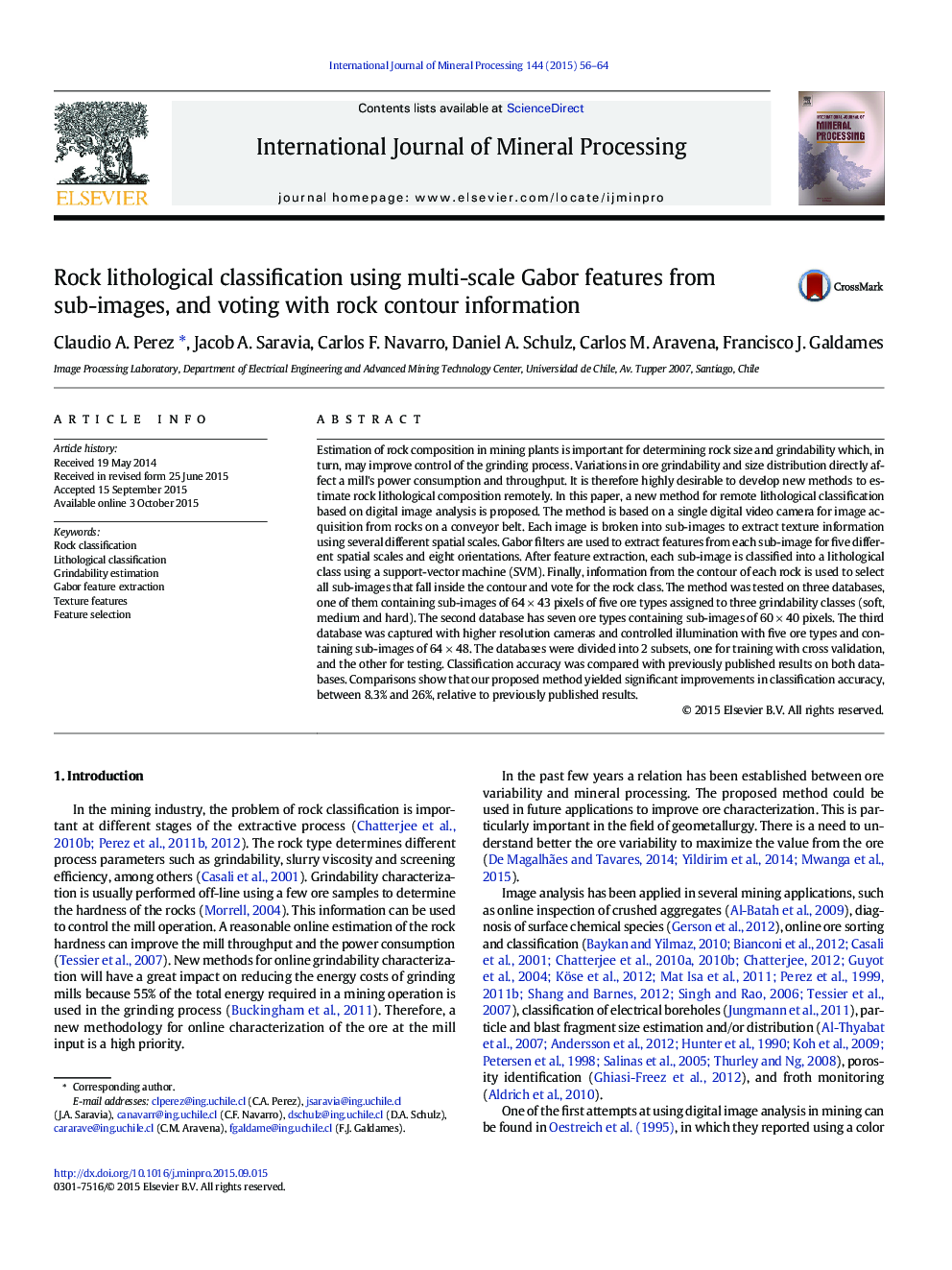| Article ID | Journal | Published Year | Pages | File Type |
|---|---|---|---|---|
| 213835 | International Journal of Mineral Processing | 2015 | 9 Pages |
•We classify each sub-image into a lithological class based on extracted features.•We extract Gabor texture features using five spatial scales and eight orientations.•Information from the contour of each rock is used to make a vote among sub-images.•Our results are compared on three different databases to those previously published.•The most relevant features can be identified using selection by mutual information.
Estimation of rock composition in mining plants is important for determining rock size and grindability which, in turn, may improve control of the grinding process. Variations in ore grindability and size distribution directly affect a mill's power consumption and throughput. It is therefore highly desirable to develop new methods to estimate rock lithological composition remotely. In this paper, a new method for remote lithological classification based on digital image analysis is proposed. The method is based on a single digital video camera for image acquisition from rocks on a conveyor belt. Each image is broken into sub-images to extract texture information using several different spatial scales. Gabor filters are used to extract features from each sub-image for five different spatial scales and eight orientations. After feature extraction, each sub-image is classified into a lithological class using a support-vector machine (SVM). Finally, information from the contour of each rock is used to select all sub-images that fall inside the contour and vote for the rock class. The method was tested on three databases, one of them containing sub-images of 64 × 43 pixels of five ore types assigned to three grindability classes (soft, medium and hard). The second database has seven ore types containing sub-images of 60 × 40 pixels. The third database was captured with higher resolution cameras and controlled illumination with five ore types and containing sub-images of 64 × 48. The databases were divided into 2 subsets, one for training with cross validation, and the other for testing. Classification accuracy was compared with previously published results on both databases. Comparisons show that our proposed method yielded significant improvements in classification accuracy, between 8.3% and 26%, relative to previously published results.
Graphical abstractFigure optionsDownload full-size imageDownload as PowerPoint slide
